It's been around 440 years since anyone understood these letters. No wonder. They were written from 1578-1584 in cipher. For some number of years they have been sitting in the National Library of France, indecipherable to anyone who might have tried. What's more, their source was unknown, so no one knew they were of any significance. When finally de-ciphered, it was revealed who wrote them – Mary Stuart, also known as Mary Queen of Scots. They were written while being held under a form of house arrest by her cousin, Queen Elizabeth I. They were written to her friend and ally, the French Ambassador. Now we know what she had to say but didn't want the English authorities to know.
As to how a queen ended up imprisoned, that's a long story, too long to recount here. Briefly, Mary was born in 1542 heir to the Scottish throne. It didn't take long. Six days later the King died and she was Queen. Talk about taking on heavy responsibilities at a tender age! No wonder her life was messed up. Not surprisingly, it led to lots of intrigue among those who would hold power in her stead, intrigue that would follow her all her days. She was next pledged to the heir to the throne of France at the age of five, he a younger “man” of three. Eventually she became Queen Consort of France as well as Queen of Scotland, but when the French King died a year later, she returned home. Thereby began her active years as Queen, filled with intrigue, murders, and endless jockeying for position between nobles, foreign nations, and religion. Battles between Catholics and Protestants in England and Scotland were unending, and continued long after the parties to this drama disappeared from earth.
In time, she remarried, her second husband was murdered, and Mary was among the suspects. It gave Protestant rivals grounds to to charge the Catholic Mary. She was imprisoned, overthrown, and finally escaped to England, seeking protection from her cousin, Queen Elizabeth I. Bad move. English Catholics did not recognize Protestant Elizabeth as Queen because she was the product of Henry VIII's second marriage, which the church did not recognize as legitimate as they never sanctioned the divorce from his first wife. They wanted Mary to be English Queen, and they wanted it now, not after Elizabeth's passing. Mary had a claim as she, like Elizabeth, was a descendant of Henry VII. At times they revolted against Elizabeth on Mary's behalf, even if she did not request it. No wonder Elizabeth was suspicious of Mary.
For the next couple of decades, Mary was held under confinement, as the childless Elizabeth was always suspicious of her cousin. Years later, Mary was convicted of trying to overthrow and kill Elizabeth, and the vacillating Queen consented to her execution, though later claiming she never officially authorized it.
It was while Mary was under the “care” of her cousin Elizabeth that she wrote these letters. They were directed to Michel de Castelnau, the French Ambassador in London from 1575-1585. However, she didn't want English authorities reading her messages to the representative of a friendly power, and she figured, undoubtedly correctly, that they would. So, she had them enciphered in a code that would make them indecipherable. It was quite sophisticated. It is unknown who rewrote her letters in cipher on her behalf.
Ciphers of the simplest form simply substitute a symbol for a letter. As such, it isn't too difficult to break. To make this one, literally, indecipherable, a more complex code was used. Multiple symbols can be used for the same letter. This makes it difficult to guess which are common letters like “e” or “s” that are more frequently repeated. Some symbols represent words, names, or syllables instead of letters. Some symbols are blanks, others mean repeat the previous or following letter. As with any letter, there are occasional errors which can make breaking the code even more difficult.
Most of these letters were found in the National Library of France. However, since they were kept together with some Italian material, the decoders first tried interpreting the letters as being in Italian. When that failed, they switched to French and that was when they were able to start the process of breaking the code. They had help with computer algorithms that enabled them to work faster and more efficiently than would have been possible earlier. However, that was not the primary reason these very historic letters were never translated before. There was one more issue. No one knew what they were. No one knew they were important. It was only after the decoders were able to translate the letters that they realized who they were from, and to whom they were sent. The whereabouts of Mary's letters was long thought to be unknown.
Fifty-four of the 57 letters were to Castelnau. They were written from 1578-1584. Mary also wrote non-ciphered letters which were sent through official channels. In those she wrote about matters that would not cause her problems if intercepted (which, of course, they were). Those letters are found in the British library while those sent through helpful couriers to Castelnau ended up in the French library. She writes bitterly about Robert Dudley, a statesman and favorite of Queen Elizabeth, so much so that when he married, she was quite upset. She also writes of intrigues between the courts of Spain and France and offers her help. She became very upset when her son, the future King James I, was kidnapped. She also complains about her living conditions.
After 1584, Mary was transferred to another residence where smuggling out letters was more difficult. There are some, but not as many. Finally, after Mary was implicated in a plot to kill Elizabeth, she was convicted and beheaded on February 8, 1587.
The authors of this massive project, and it is massive (they deciphered about 50,000 words) were George Lasry, Norbert Biermann, and Satoshi Tomokiyo. They are from France, Germany, and Japan and this was not their regular jobs. They did it all with online copies. You can read their full detailed report, including descriptions of each letter and full translations of some, in Cryptologia - Deciphering Mary Stuart's Lost Letters from 1578-1584. www.tandfonline.com/doi/full/10.1080/01611194.2022.2160677


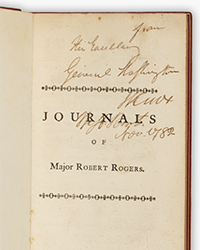
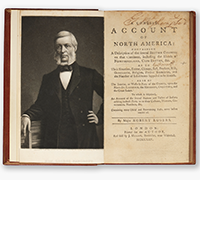
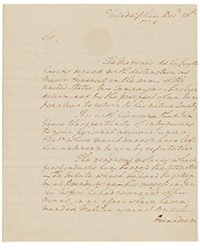

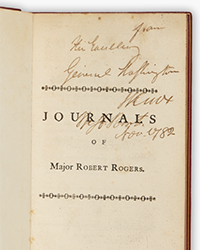

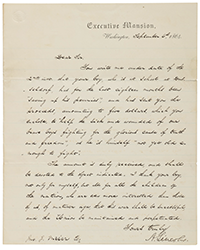
![<b>Sotheby’s, Jan. 27:</b> [World War II]. An archive of maps and files documenting the allied campaign in Europe, from the early stages of planning for D-Day and Operation Overlord, to Germany’s surrender. $200,000 to $300,000. <b>Sotheby’s, Jan. 27:</b> [World War II]. An archive of maps and files documenting the allied campaign in Europe, from the early stages of planning for D-Day and Operation Overlord, to Germany’s surrender. $200,000 to $300,000.](https://ae-files.s3.amazonaws.com/AdvertisementPhotos/9d2762bc-9f26-47ef-96de-1c28070e19f6.png)